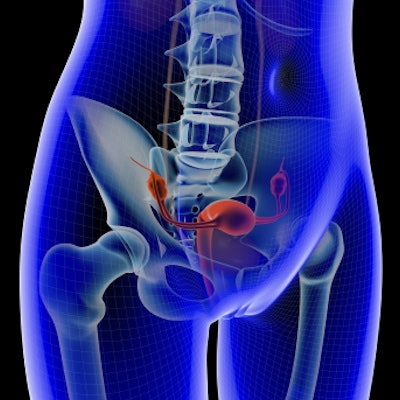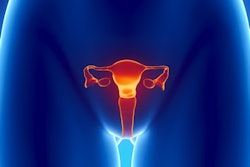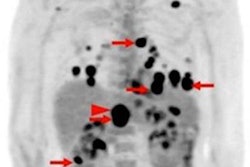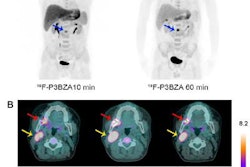
Can FDG-PET/CT be used to direct the treatment of locally advanced cervical cancer by determining which patients should receive more extensive chemoradiation therapy (CRT) or palliative care? Maybe, but findings from a new study published online September 14 in JAMA Network Open are equivocal.
Canadian researchers compared the staging of cervical cancer with FDG-PET/CT to staging with CT alone. They found that 39% of patients received additional chemoradiation therapy after FDG-PET/CT scans, compared with 25% of those who received CT alone. There was no statistically significant difference between the two approaches, however.
"There was a trend for more extensive CRT with PET/CT, but the difference was not significant because the trial was underpowered," wrote the researchers led by Dr. Lorraine Elit from McMaster University in Hamilton, Ontario. The study ended prematurely because it did not reach its planned target of 288 subjects.
It is well-known that appropriate cancer treatment depends on proper staging of the disease. Both CT and MRI have been the modalities of choice to determine whether cervical cancer is locally advanced. With the advent of PET/CT, clinicians can obtain both anatomic and functional information.
However, there is "limited evidence of clinical benefit or improved outcome with PET/CT" for locally advanced cervical cancer, Elit and colleagues noted. Thus, in 2009, the researchers began a randomized clinical trial to evaluate whether FDG-PET/CT adds any value in determining the best treatment.
Patients were enrolled from April 2010 to June 2014 at six regional cancer centers and associated academic institutions in Ontario. The median follow-up time was three years, with the analysis conducted in March 2017.
The study included 169 women who were newly diagnosed with stage IB to IVA cervical cancer. All patients were candidates for chemoradiation therapy. Among the women, 113 (mean age, 48.1 ± 11.2 years) underwent FDG-PET/CT plus CT of the abdomen and pelvis; 56 (mean age, 48.9 ± 12.7 years) received only CT.
Overall, 44 patients (39%) in the PET/CT group received more extensive CRT or palliative treatment, compared with 14 patients (25%) in the CT group (p = 0.06).
| Patient treatment plans after FDG-PET/CT or CT alone | ||
| FDG-PET/CT group | CT group | |
| Total No. of patients | 113 | 56 |
| Standard CRT | 68 (61%) | 42 (75%) |
| Extensive CRT | 38 (34%) | 11 (20%) |
| Palliative care | 6 (5%) | 3 (5%) |
While there was a trend for standardized uptake values (SUVs) to be associated with survival, the results were not statistically significant. In addition, there was no difference in survival between the two patient groups.
"Although our trial was underpowered, it is reasonable to consider the results within the context of the National Comprehensive Cancer Network recommendations that are based on observational data. ... A prudent and efficient approach might be to consider PET/CT only for patients with abnormal pelvic nodes on CT," the researchers concluded.




















